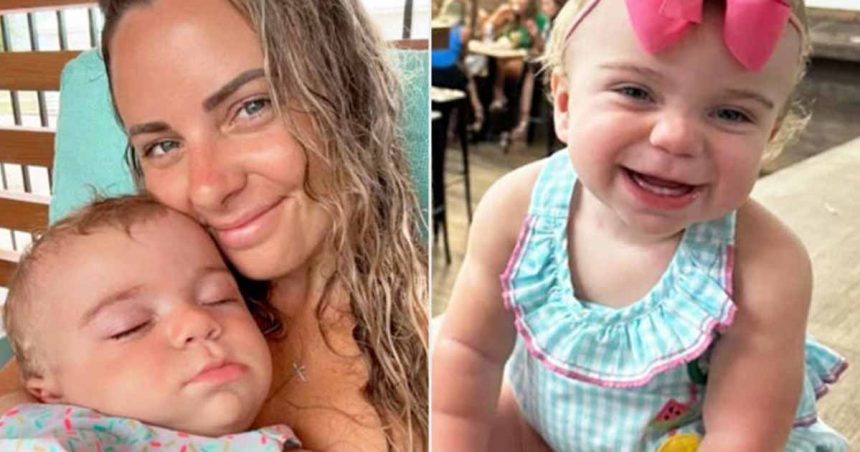Morgan Rachal was taken by surprise when she stumbled upon a video on TikTok featuring a little girl diagnosed with Sanfilippo syndrome, also known as childhood dementia. The girl in the video had eyebrows similar to Morgan’s 18-month-old daughter, Lydia. This discovery prompted Morgan to investigate further.
A sign of childhood dementia
Sanfilippo syndrome, a rare and terminal genetic disorder, manifests as childhood dementia. Children with this syndrome appear normal initially but begin to regress, lose motor skills, and typically die before reaching adulthood. Concerned by the resemblance between Lydia’s eyebrows and those of the girl with Sanfilippo syndrome, Morgan decided to seek medical advice.
“I looked at it and I just saw Lydia’s face in this child,” Morgan recalls. Despite Lydia meeting developmental milestones, the presence of common baby health issues like ear infections, constipation, and sleep disturbances raised a red flag for Morgan.
Diagnosed with Sanfilippo syndrome
Following a consultation with Lydia’s pediatrician and subsequent testing, Lydia was diagnosed with Sanfilippo syndrome. The disorder primarily affects metabolism, leading to the accumulation of cellular waste in the body due to a deficient enzyme. This buildup impairs brain and nervous system functions over time.
Despite the diagnosis, Lydia’s condition has not significantly progressed, according to a genetics specialist. Children with Sanfilippo typically start regressing around ages 3 or 4, but the prognosis remains uncertain due to the lack of a cure and limited treatment options.
What is Sanfilippo syndrome?
Sanfilippo syndrome progresses in stages, with early signs often misconstrued as common health issues or developmental delays. As the disorder advances, children may experience digestive problems, infections, sleep issues, behavioral challenges, and developmental setbacks.
Later stages of Sanfilippo syndrome involve childhood dementia, hearing loss, seizures, and loss of motor functions. Ultimately, affected children may lose the ability to walk, eat, or communicate independently.
“The worst day of my life”
A month post-diagnosis, Morgan reflected on the impact of the news, acknowledging the shattered expectations for Lydia’s future milestones. She expressed concern about breaking the news to her older daughter, Heidi, about Lydia’s terminal illness.
Living with childhood dementia
In the wake of the diagnosis, Morgan mobilized efforts to raise awareness about Sanfilippo syndrome and explore potential clinical trials for Lydia. Through sharing her story on social media, she aims to shed light on this rare condition and advocate for more research.
“I’m glad my mom didn’t wait to send me that video,” remarks Morgan. Early detection has enabled her to advocate for Lydia and seek necessary support for her daughter.
Sources
- “Woman Thought Baby’s Facial Feature Was Trait from Dad, Then Realizes It’s Symptom of Childhood Dementia (Exclusive).” People. Virginia Chamlee. June 14, 2024
- “I thought my baby girl got her bushy eyebrows from her dad… they turned out to be an early sign of a heartbreaking disease.” Daily Mail. Alexa Lardieri.June 14, 2024
- “What Is Sanfilippo Syndrome?” CureSanfilippoFoundation. Dr. Cara O’Neill, FAAP. June 15, 2023
- “What Is Sanfilippo Syndrome?” WebMD. Dany P. Baby, MD. April 20, 2022






